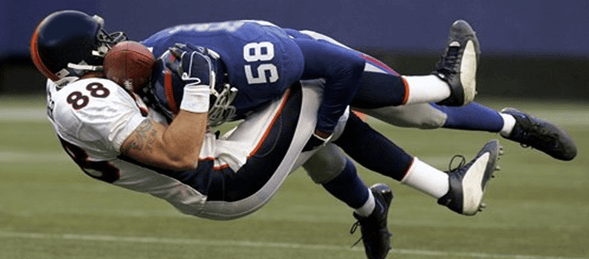Will Eliminating Contact From Sports Produce The Results We Want?

Across the country — from youth leagues and high schools, to the collegiate level and the pros — hard contact is being eliminated from sports of both the contact and non-contact variety.
While it stands to reason that removing or limiting violent plays from the field, court or ice is going to help keep players safe, it raises another question entirely: will eliminating contact produce the positive impact on sports we want?
Let’s take look at four ways sports may be impacted, or are being impacted, by removing contact from the game.
1. Help Remove Injuries…
Obviously, the biggest concern with hard contact in sports — and the biggest reason why it’s in jeopardy of going away — is injuries.
From orofacial injuries and broken bones to concussions and other devastating injuries, the number one goal of removing contact is to increase player safety. Keeping athletes safe — particularly young athletes — is without a doubt important, and limiting contact certainly helps to limit injuries.
However, injuries are simply a part of sports and can’t be removed entirely…
2. …But Not All Are Removable
Things happen. Sports are still physical in nature. Even with contact removed from the game, accidental collisions and non-contact injuries, like ACL or Achilles tears, are still going to occur.
Take basketball and soccer for example, two sports that don’t allow body checking or tackling. Yet, both sports see more orofacial injuries than any other sports — mainly because they don’t require helmets or facemasks, which means athletes are left open to facial and oral injuries. Even women’s hockey, which unlike the men’s game doesn’t allow body checking, still sees serious injuries from contact.
It’s simply the nature of sports themselves; it is impossible to completely remove contact and injury.
3. The Right To Choose
While it’s important to watch out for athletes of all ages and make sure they are taking care of themselves, we also have to remember that they’re athletes; they choose to play the game.
Sports leagues and governing bodies should implement rules to protect players, but they shouldn’t make up the players’ minds for them. Athletes, particularly those playing contact sports, know what they signed up for. It is their responsibility to assume the risk.
Players choose to play games — violent or not — and choose to play the game physically or not. It’s their body and their choice.
But they still need to be responsible and accountable, particularly to their opponents. They must respect the game and play fairly, not take cheap shots or purposefully inflict harm to an opponent. THAT’S where governing bodies should come in.
4. It’s In The Teaching
Instead of removing contact entirely, some leagues are simply pushing back the introduction of contact to a later age. Youth hockey has removed checking from the peewee level, instead beginning the practice once kids reach bantam. Youth football seems to be following the same train of thought.
The thinking is simple: the brain hasn’t developed enough to take contact at that age and more damage may occur because they are younger. It is also frankly harder for younger minds to handle the multi-processes of playing the game, catching the ball/handling the puck, while giving or receiving a hit, all at the same time.
But waiting to teach young players how to hit may have some dangerous side effects. It may be safer to teach kids to hit when they are lighter and less muscularly developed. That way, if they deliver contact improperly, they won’t inflict too much damage since they simply lack the physical force to cause harm.
When those athletes grow and become stronger, they make harder, more violent contact. And if not delivered correctly, they may really cause damage to themselves and others.
Will eliminating contact from sports produce the positive impact we want? Maybe. But teaching our athletes correctly and keeping them properly protected will too.




 Across the country — from youth leagues and high schools, to the collegiate level and the pros — hard contact is being eliminated from sports of both the contact and non-contact variety.
Across the country — from youth leagues and high schools, to the collegiate level and the pros — hard contact is being eliminated from sports of both the contact and non-contact variety.
